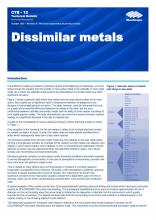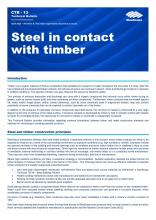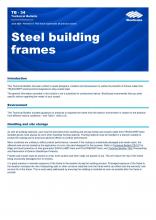Warning
Please be advised this website is for internal review purposes only and is not to be distributed until advised.
Please be advised this website is for internal review purposes only and is not to be distributed until advised.
A range of fasteners specifically engineered for LGS framing applications are available to the building industry. The types of fasteners typically used in light gauge steel building applications include:
The most common type of fasteners plumbers are likely to use are self-drilling hex head screws. Where fasteners are located in more vulnerable locations such as marine environments, more durable fasteners are recommended. These need to be compatible with the steel frame. Please review BlueScope’s Corrosion Technical Bulletins, listed in the resources section for more information. NASH’s General Guide to Steel Framed Building publication details typical fixing screws used for LGS frames and information can also be obtained from fastener manufacturers' literature. Some links are provided in the Resources section below.
Materials that can be used in contact with LGS:
Materials that must be isolated from LGS framing:
Fasteners made from stainless steel, copper, brass etc. are not allowed under any circumstance because they cannot be isolated from the LGS steel. Washers made from these materials need to be isolated from the frame.
BlueScope’s Corrosion Technical Bulletin 12 provides a summary of materials that can safely be used with LGS framing and those materials that need to be isolated from the frame.

Timber (treated or untreated) can be used, for example as a noggin, but needs to be isolated from the LGS using a membrane. The recommended method of isolation is with an impermeable membrane such as the material used for damp course applications. BlueScope’s Corrosion Technical Bulletin 13 provides further information on isolating steel in contact with timber.

A general guide to assist qualified tradepersons in the fixing of materials to steel framed houses.

This corrosion technical bulletin outlines: The basis of dissimilar metal corrosion with reference to the galvanic series of metal and alloys in sea water; Table of compatibility of direct contact between metals or alloys when choosing fasteners and accessories.

This corrosion technical bulletin provides information regarding common interactions between timber and metal construction elements and methods for minimising or avoiding possible corrosion.

The purpose of this Technical Bulletin is to provide recommendations of compatible fasteners, most commonly self-drilling screws, for use with roofing, walling and accessory products made from BlueScope coated steel.

This Technical Bulletin has been written to assist designers, builders and homeowners to realise the benefits of frames made from TRUECORE® aluminium/zinc/magnesium alloy-coated steel.

The Bremick range of self-drilling screws includes screws suitable for steel framing.

Buildex fastening solutions for in factory fixing and on site fixing in steel frame housing.

ICCONS offer a comprehensive range of construction fastening systems for steel framing applications.

Ideal Fasteners specialise in the steel frame industry and actively work with steel frame manufacturers, suppliers and home builders.

See the Ramset™ Anchoring and Fixing ranges and access technical data and documents.

In this topic we explore plumbing run provisions, pre-punched service holes and separation using grommets.